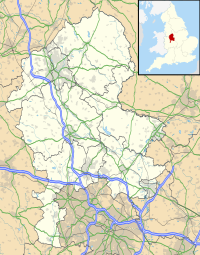| Stone Meadows | |
|---|---|
 Crown Meadow | |
| Location | Stone, Staffordshire |
| OS grid | SJ 901 336 |
| Coordinates | 52°53′59″N2°8′55″W / 52.89972°N 2.14861°W |
| Designation | Local nature reserve |
| Website | www |
Stone Meadows is a local nature reserve adjacent to Stone, in Staffordshire, England. There are three separate meadows by the River Trent. [1] Goodall Meadow and Southern Meadow are reserves of Stafford Borough Council; Crown Meadow is a reserve of Stone Town Council. [2]
